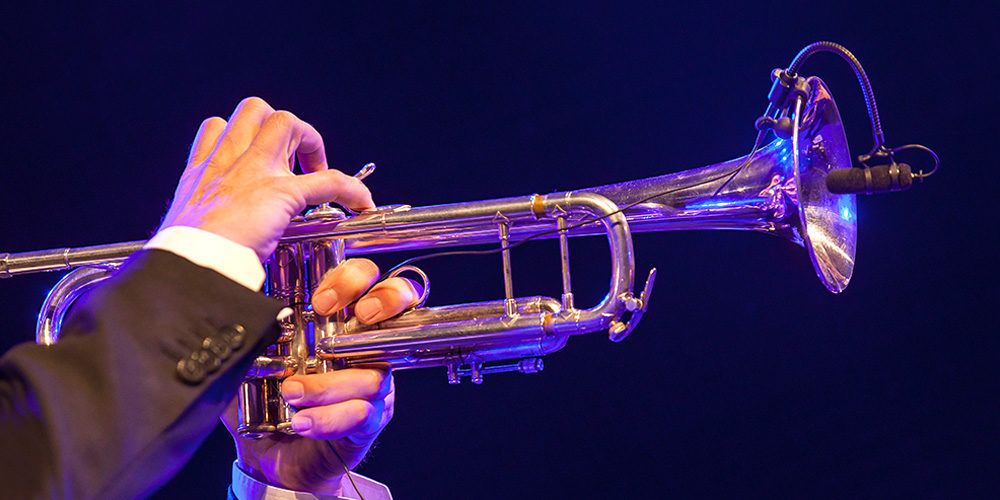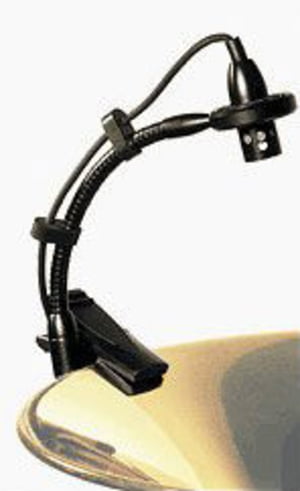4. Brass wind instruments
The advantage of brass wind instruments is their largely directed refraction which is rotationally symmetrical around the bell.
Simplifying a bit, you could say that the angle of refraction decreases the higher the frequency or sound gets, so that clip-ons are a good solution for brass wind instruments. Likewise, inherent noise is negligible due to its exceedingly low level with brass wind instruments. Finally, the sound level decreases markedly more slowly over distance than with wood wind instruments. This increases the reverberation radius and decreases the importance of space acoustics significantly.
The disadvantage is their greater sound level (trumpet!). You must bear this in mind when selecting your mic. Very sensitive condenser, large-diaphragm, or even ribbon mics should not be considered. The problem might be mitigated by positioning the mics further away from the source or by where you point them, i.e. set them up in a way that the sound "passes by" the mic membrane.
In live recording, on the other hand, you'll most likely go for good dynamic or instrument-specific mics (clip-ons).
The trumpet
Musicians such as Till Brönner and Joo Kraus have contributed to what can only be called a trumpet Renaissance over the past years. Popular with a very diverse audience, they have made a jazzy playing style very popular. Of course, this has influenced the number and tastes of young trumpet players, too, and extends the reach of the trumpet to beyond band music. Thus, recording engineers are faced with this instrument much more frequently than they used to be, quite apart from which a good brass section including a trumpet clearly elevates the style of any funk or soul band, right?
But back to our instrument:
The trumpet not only possesses an extended frequency range, but also unfortunately the greatest acoustic pressure. This can be as forceful as 140dB! Therefore, dynamic mics should be used.
A very popular model is the famous Elektro Voice RE20.
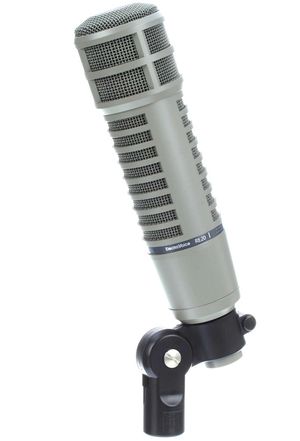
EV RE 20 dynamic large diaphragm mic
It should be directed towards the bell and slightly offset at a distance of about one metre. This achieves a very natural sound which does not overemphasize the tightly packed high frequencies.
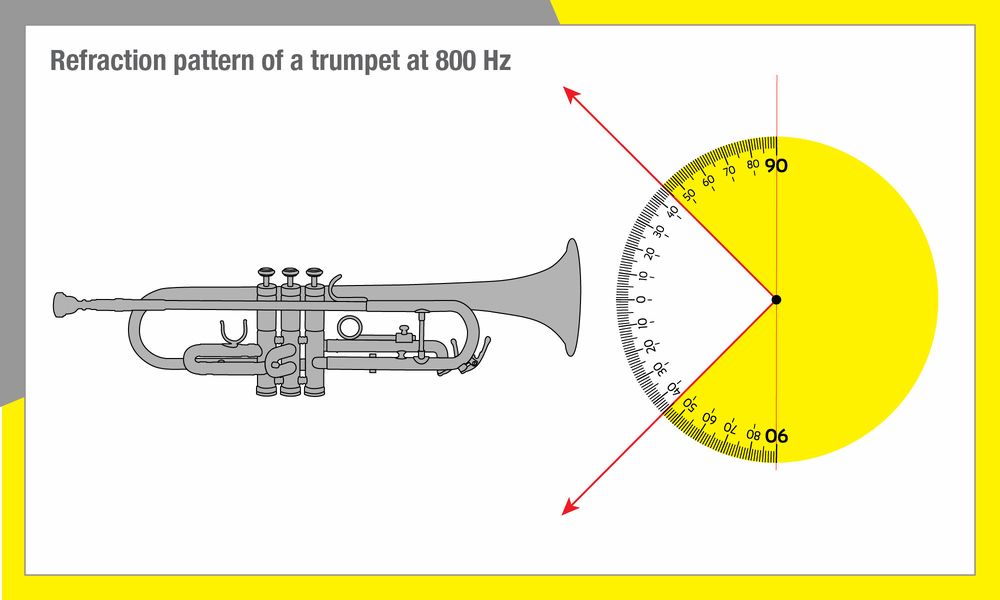
It remains of interest that the sound refracts backwards, too, in the range around 800 Hz.
The classical recording method for trumpets involves a clip-on mic positioned directly on the bell. This means the mic remains at the same distance at angle which is especially suitable for live recordings, of course.
DPA d:vote 4099 Trumpet – Mikrofon
The trombone
Last but not least among the instruments in the classic brass section, the trombone completes the sound and frequency ranges in the bass area, although its overtones can almost compete with those of the trumpet and we have to be mindful of its sound pressure, too.
Microphone setup is as with the trumpet, although the mic can be placed somewhat closer to the instrument here. The direction should also not be axially aligned to the instrument's bell.
Clip-on mics are only recommended for use without mutes.
At this point I would like to give you a piece of advice on playing with a clip-on mic:
Every player needs to release the condensation water which automatically collects in the instrument's tube. Even experiences players can slip and do so when the mic is open, which renders the recording unusable both in live and studio situations. So please be mindful of this!
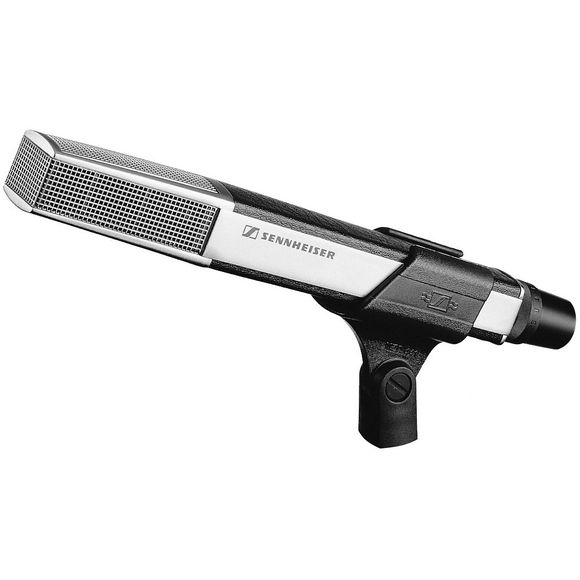
Otherwise, we should mention the Sennheiser MD 441 for trombones, too.
The Horn
Recording this instruments involves a special feature:
Unlike the trumpet and the trombone, the horn is played diagonally towards the back of the player and held with the right hand on the bell, usually. This leads to a sound whoch freom the audience's listening position is diffuse and indirect.
If you still need to chose individual mics, you should record in front of the bell, i.e. behind the player. This, however, means that the recording won't sound faithful to the live experience. Thus, an acceptable compromise between the main and the spot mic has to be achieved in mixing.
Condenser and large diaphragm mics are suitable devices. As we can safely assume that the recording will be of classical music mainly, and that thus faithful recording of the sound is of utmost importance, you should choose mics of medium price and upwards.
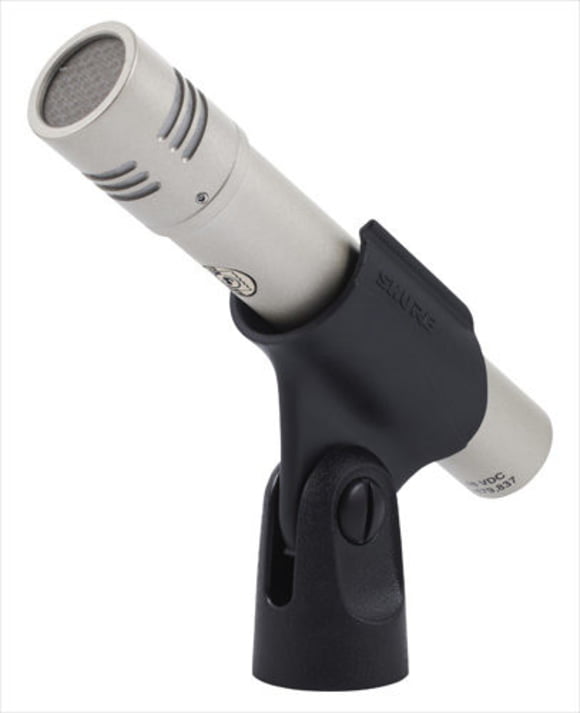
Shure KSM 137 small-diaphragm mice
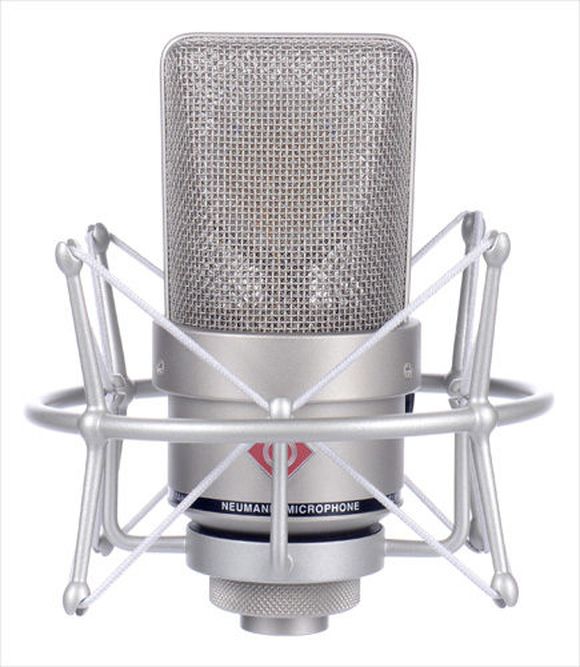
Neumann TLM 103 large-diaphragm mic
The tuba
The tuba is one of the least difficult instruments to record as far as mic arrangement is concerned. The refraction direction is less tight in its case, as frequencies of over 2,000 to 3,000 basically do not occur. Thus the upward-pointing bell is also of less importance.
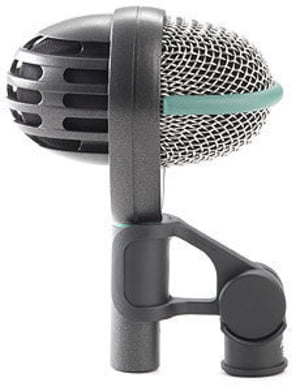
For the deeper sounds: the AKG D 112
If the tuba has to be separately recorded even though it can usually hold its own in a brass ensemble, you can fall back on a good old mate:
Using a suitable mic boom (height!) the mic is placed directly above the bell at a distance of about half a metre.
The Audix clip-on mentioned above is quite a sensible solution and custom-made for the lower frequency ranges.



